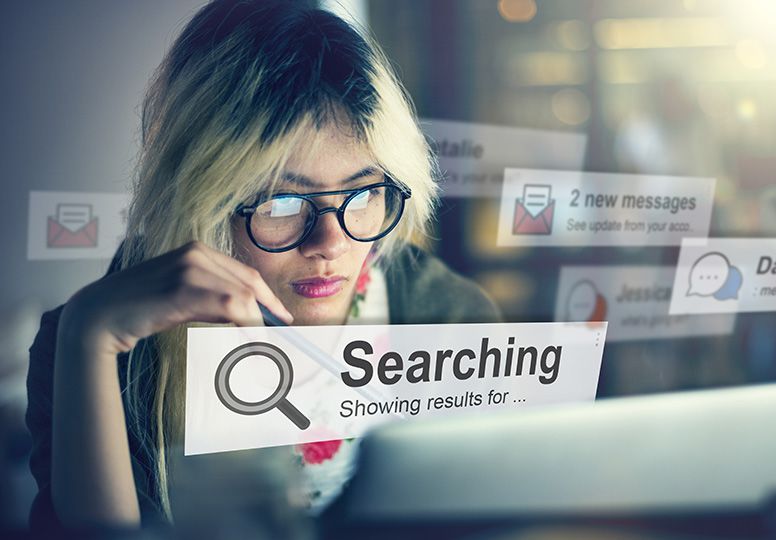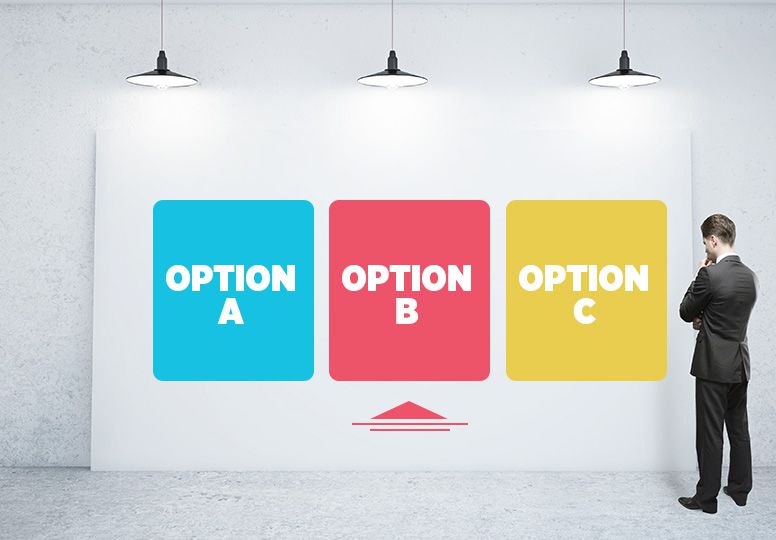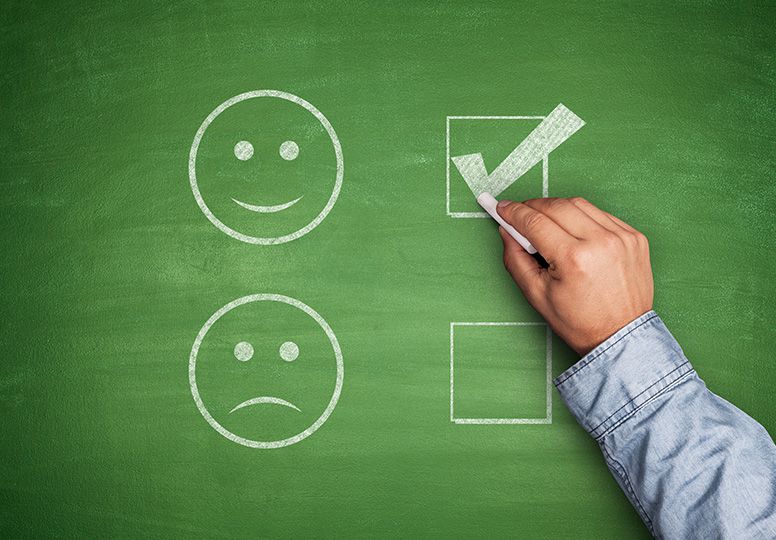96% of consumers are not ready to make a purchase when they visit your website for the first time. The average consumer will visit a website 5 times before making a purchase. Why? Simply put, they are not ready; it’s too early in the buying process.
Most of us go through life making daily purchases, unaware that there is a subconscious process at work. Ever notice long shopping days wear you down mentally? Have you ever thought about the process you go through when considering a purchase? You do this hundreds of times a year and thousands over your lifetime. Did you ever consider you follow a process subconsciously?
Well, guess what! You do follow a process, just as everyone naturally does. From a marketing perspective, imagine knowing the process your customers will go through. Then you could design marketing around that process.
Now, let’s get to it and identify the 5 Stages of the Buying Process!
5 Stages of the Buying Process
- 1. Awareness & Interest
- 2. Information Gathering
- 3. Evaluation of Choices
- 4. Purchase Decision
- 5. Post-Purchase Behavior
Every time we shop, we go through these 5 stages subconsciously. Some people even have the power to be aware of the process as it is taking place. After reading this article, so will you. The difference is being able to understand and accept that the process is taking place. If you know something is going to happen, then you expect it and are ready for each step along the way, expecting the next to logically follow. Which would you rather be: someone who is aware or unaware?

Let’s walk through a common example:
You have a friend who you see wearing some new shoes. Immediately, you take to the shoes and are attracted to them. You ask your friend what kind of shoes they are (or perhaps you already knew and just seeing them in person feels good). You have enough information to do some research on your own. You may check online, ask a friend, or read reviews about the shoes. You then take a look at other similar shoes. Nothing really compares to that great pair you want. You take action and purchase the shoes you wanted. You are holding the shoes in your hands now; they are yours! Success!
Would you say that you have gone through a similar shopping pursuit before?
My friends, the 5 stages of the buying process just happened right before your eyes. I want to help you understand this process so that you may improve your marketing performance (This is a double-sided coin and learning this process will empower your purchase decision-making ability).
Let’s take a look at the same example but with the 5 stages applied:
(1. Awareness)You have a friend who you see wearing some new shoes. (1.5 Interest)Immediately, you take to the shoes and are attracted to them.(2 Information Gathering)You ask your friend what kind of shoes they are (or perhaps you already knew and just seeing them in person feels good). You have enough information to do some research on your own. You may check online, ask a friend, or read reviews about the shoes.(3 Evaluation of Choices)You then take a look at other similar shoes. Nothing really compares to that great pair you want.(4 Purchase Decision)You take action and purchase the shoes you wanted.(5 Post-Purchase Behavior)You are holding the shoes in your hands now; they are yours! Success!
Marketing Tip – There are two parts of buying: emotional and logical. Marketers appeal to emotion while creating a world where the purchase is logical. I am sharing this with you because influence will impact the emotional response, which is the response that keeps consumers engaged while going through the process. If you have two different perspectives on what influence to apply, you will end up with different results.
Stage 1: Awareness & Interest

Customers cannot buy something they do not know exists. You must first gain awareness (also referred to as attention and visibility). If no one is looking or listening, the message you are sharing doesn’t matter. Focus on gaining awareness as the first key area of your marketing approach.
With digital marketing, there are many ways you can raise awareness of your products or services online. Targeted ad campaigns, for instance, are focused on specific demographics and psychographics. It brings product awareness to consumers who are highly likely to be interested. It is a highly effective and a profitable form of marketing. This type of digital marketing brings awareness to your product even if someone didn’t know it existed.

Most consumers become aware of products and services online before ever seeing them in person. In today’s digital world, your storefront is your website. Your receptionist is your email address. And your reputation is your social media account. Are you managing your digital presence properly?
Marketing Tip– When planning ad spend, be specific about funds going directly to raising awareness. You will measure awareness by total site visits, social followers, and overall reach. These numbers will demonstrate the effectiveness of your awareness campaign.
Stage 2: Information Gathering

Great job! Now people know about you and are interested! The previously mentioned tactics in the first stage are to gain awareness and peak interest. Now you must capitalize on supplying information that will support your claim or cause. Think of this as the message you want to deliver. Consider these questions:
- 1. What is the message your customers want to hear that will help them purchase?
- 2. What do consumers want to know?
- 3. What do consumers need to know?
- 4. What will consumers like to know that will take them to the next stage in the buying process?

Customers vary in the quantity and quality of information they require. Learning how to segment your customer groups into buyer personas will help reduce marketing ad spending while maximizing revenues. You can send out messages to targeted audiences. The message you are sending out must be understood from the customer’s perspective, not the brand’s. It’s okay to say, “we think this and our customers think this.”
Stage 3: Evaluation of Choices

Your brand, product and/or service is going to be compared to something. What that something is depends on the person who is doing the comparing. Each individual may compare differently. You may be compared with another brand or, perhaps, it’s your product versus another. There are even times when you or your goods are compared to an experience.
Typically, the comparison will be based on the value proposition. For goods that are inexpensive, the highest perceived quality for the lowest price usually wins. Quality is going to be a factor that is considered in almost every case. This is why good influence goes a long way. People buy from people and brands they like. If you are being compared to another brand or other goods, it’s best to be liked (and known, i.e. brand awareness).

Let’s take a look at how this contrast principle works! For instance, if at a cocktail party you talk to an unattractive person and are then joined by an average-looking person, you will judge the average-looking person to be more attractive than he or she really is and than you would have originally perceived him or her to be independently. It’s because you had this unreliable scale of comparison in mind! In this way, the contrast principle/effect can affect our judgements in relation to people, products, market values, and the values of many other attributes and characteristics.
Sometimes you will see this applied digitally by offering multiple selections with the purpose of making one stand out as the best perceived choice.
Stage 4: Purchase Decision

So the consumer has done his or her research and has decided to make a purchase. Now, this can one of two ways:
- Purchase – This is obviously the ultimate goal!
- Walk Away– The consumer decides at the last minute to not make the purchase after all.

The purchase decision stage can happen quickly or may take some time; it depends on the individual and other factors, such as price and influences. The decision once made is an action and, thus, is completed quickly. Typically, we don’t recall making the purchase; we recall what led to the purchase and/or how we felt afterwards. There is nothing that can be done at this stage from a marketing perspective; this is the goal.
Stage 5: Post-Purchase Behavior

Congratulations! The consumer has purchased from you! This may result in one of two options:
- Satisfaction – The consumer is happy with the purchase. He or she may even purchase again, subscribe to the company’s mailing list, or follow them on Instagram.
- Buyer’s Remorse– The consumer regrets the purchase.What the consumer expected did not match reality. Most likely that consumer will not return as a customer.
So, how do you determine which category your consumers fit in? Communication and data collection are both crucial here. When you communicate with those who have purchased from you and get post-purchase behavior data, you can apply it to your business and make adjustments so that you can improve.

Reach out and get a hold of paying customers. Who better to ask than people who have already reached into their pockets to support your brand? There is no one better. The question is are you doing this? If you are not following up, you are saying you do not care about your customers enough to ask them if they are happy. How many recent purchases have reached out to you to inquire? How do you feel when they do? Is how they reach out important?
Conclusion
The 5 stages of the buying process could happen in days, weeks or possibly moments apart. Once you understand the buying process, you can better understand consumers. Using that knowledge, you can increase your customers and revenue. See the helpful appendix below for some helpful tactics on how to use these stages to your business’ advantage!
*Each brand is unique in their business model, industry and economy. We cannot advise what is best for each brand or business, we must list things out as a general follow to guide. The purpose of our content is to help stimulate your digital marketing creativity and execution.
APPENDIX
How Do You Gain Awareness, Attention, Visibility?
- Tactic #1- Social Media
- Social media is one of the fastest ways to gain awareness. Why? Because people use social media more than any other technology or platform available. Great marketing goes to where the people are, and social media is that place. You can share photos and videos, chat in groups, give advice, earn respect and gain authority. The days of free social media are gone; it’s now a pay to play system so get used to it. Boosting posts is becoming standard for brands seeking to grow.
- Tactic #2- Search Engines
- Search engines bring traffic to your site and, thus, is a great source of awareness. With one Google search, people will go from being unaware about your product/service to becoming aware. Keywords and phrases are precise with spelling errors even being accounted for in strategic planning.
- Tactic #3- Other Referring Sites
- Other sites could link to your site and help raise awareness. A great way to find the right brands to partner with is to answer these questions: Who you share customers with? Who do you not compete directly with? Send messages out and start a working relationship; it benefits all parties.
- Tactic #4- Advertising
- Lastly, spend money on advertising. Social media is the best place to advertise when the time and offer is right. Focus on building those first 3 tactics before you advertise.
How Do You Invoke Desired Interest and Make Them Want More?
- Tactic #1- Videos
- Video is the best performing, most engaged content in the world today. Almost 5 billion videos are watched on YouTube daily. Facebook reported that 100 million hours of video are consumed daily on their platform. Videos are great because they allow for more information to be shared in a shorter amount of time. Videos benefit during your sales process for educational purposes.
- You may have heard that the best customer is an educated customer. Do you think that’s more true in a time when you can learn anything from the comfort of your couch? Videos are also a great way to demonstrate your character and likeability from a brand’s perspective. Videos can be entertaining and informative at the same time, and consumers prefer it that way. Invest in video, send out a great positive message, and watch what comes back. The tip jar is on the counter on your way out.
- Tactic #2 – High-Quality Graphics
- High-quality graphics portray attractiveness, trustworthiness, and authoritative experience. Think of your quality on a scale (1-100), where does it rank? Do not take the low quality (cheap) route just to follow the process; it may backfire on progressing to the next stage. You get out what you put in when it comes to quality. Quality is the main factor in most failing digital marketing strategies. Do not make the mistake of underestimating its value. Graphics or images evoke an immediate emotional response. Ask yourself “What emotions are we trying to invoke?”
- Tactic #3 – High-Quality Copy
- In the digital marketing world, we refer to copy as the text you see (just as you are reading now). All too often you will see brands rushing out copy without it being quality. Copy quality is determined by the copy’s purpose. Writing copy should not be left up to the designer or to a developer, or to a small business owner who does not market much. Copy is a skill that is earned through education, trial and error.
How Do You Supply Information?
- Tactic #1- Address Pain/Problem
- Customers may think they need one thing and end up getting something entirely different. Get to know your customers’ pains or problems. If you are not solving a problem, then you are in a sinking ship; get out fast! The message you are sending out should enforce you will ease or remove the pain/problem.
- When JG was first starting out, we were marketing ourselves to our ideal client However, our ideal client’s point of entry would first be education and then services. We had to focus on extending our sales process to include education for a term. Basically, our ideal clients were not ready to purchase because they required specific information to understand why they should purchase. We then marketed ourselves differently to other targeted groups and offered smaller packaged services with instant success while we played the long game with larger clients.
- Tactic #2- Ethical Influence
- Influence can be used for good or evil. At JG, we are strong believers in ethical marketing and, with that comes ethical influence. Be careful, as you are impacting lives everyday. Think about likability, authority, social proof, association, and the list goes on. If you haven’t checked out our Weapons of Influence article, you should.
- Tactic #3- Be Personable
- People buy more often from people they like. Turn up the charm!
How Do You Help Consumers Choose Your Business Over Others When They Are Comparing?
- Tactic #1- On-Site Comparisons
- Try to keep the consumers on your site while they are comparing. Companies like Geico let you compare the same policies with other companies without ever having to leave their site. Provide multiple choices with one being the best perceived option. Learn more about the contrast principle.
How Do You Make Sure The Consumer Pulls the Trigger and Purchases from You?
- Tactic #1- Reminders and Information
- Send an email reminding the consumer of what you have to offer. Give them as much information as possible to convince them to choose you.
- Tactic #2- Pull Them Back In
- So you thought the consumer was ready to purchase and didn’t. Now what? Retarget your consumer by sending an email.
How Do You Collect Post-Purchase Behavior Data?
- Tactic #1- Check Your Social Media
- If your business has a Facebook page or Instagram account, see what people are saying. Also, check Yelp or other rating sites. Be sure to reach out to those past customers.
- Tactic #2- Reach Out
- Make a follow up phone call or send an email. Ask the customer about his or her experience with buying from you.
- Tactic #3- Send an Online Survey
- There are lots of free surveys you can use, like Surveymonkey, or have your marketing company create one. Use a 1-10 rating system or agree/disagree questions for ease of use.
Invitation for Feedback
We can only grow and reach our goal with the support of people like you. Please comment or share this article if it has helped you. The more shares and comments, the more FREE content to follow.
Subscribe
Subscribe to our content if you like receiving value sent to your inbox for FREE!
Links
https://www.entrepreneur.com/article/222524
https://en.wikipedia.org/wiki/Mark_Cuban
https://en.wikipedia.org/wiki/Brand_awareness
https://www-01.ibm.com/software/data/bigdata/what-is-big-data.html




